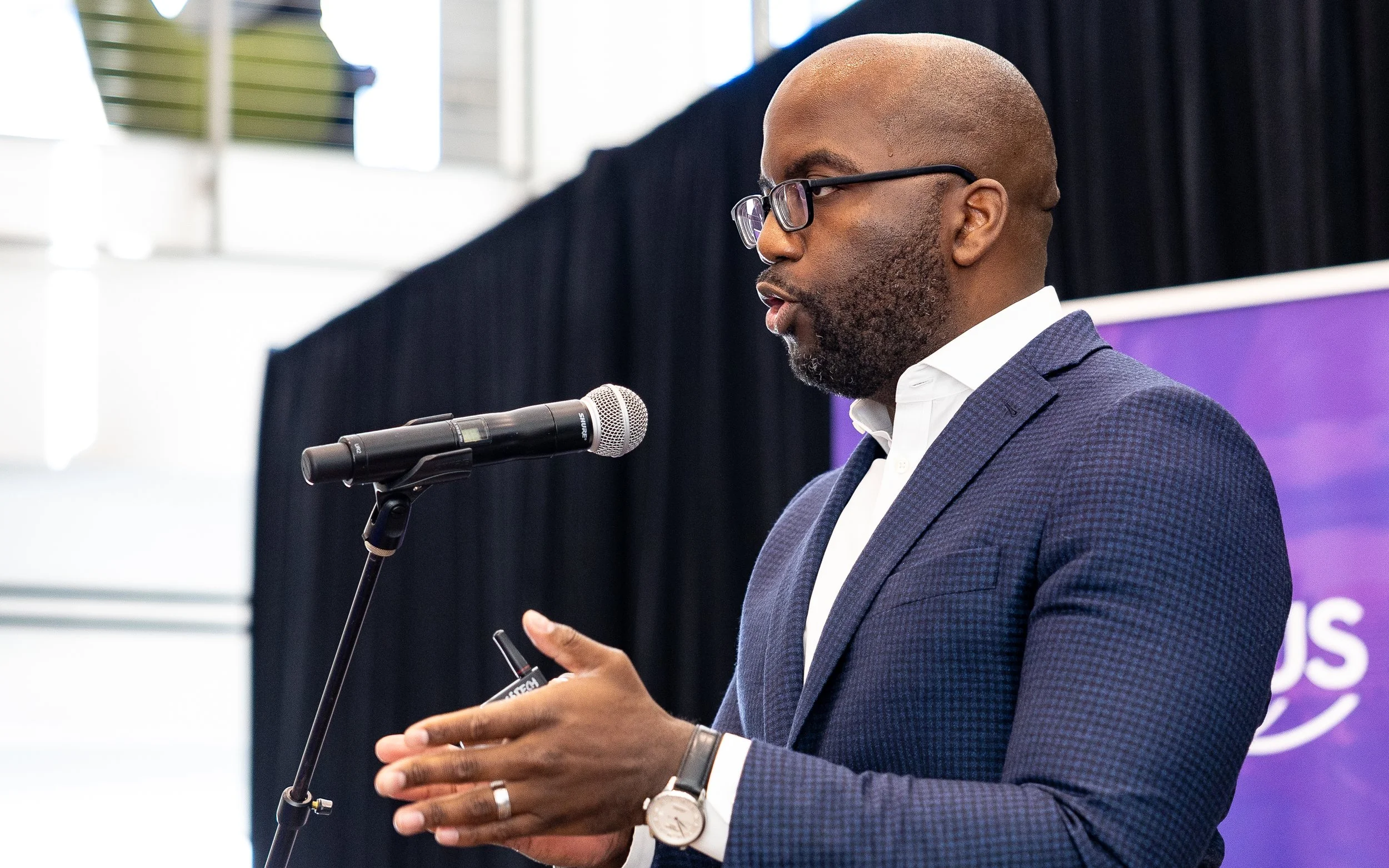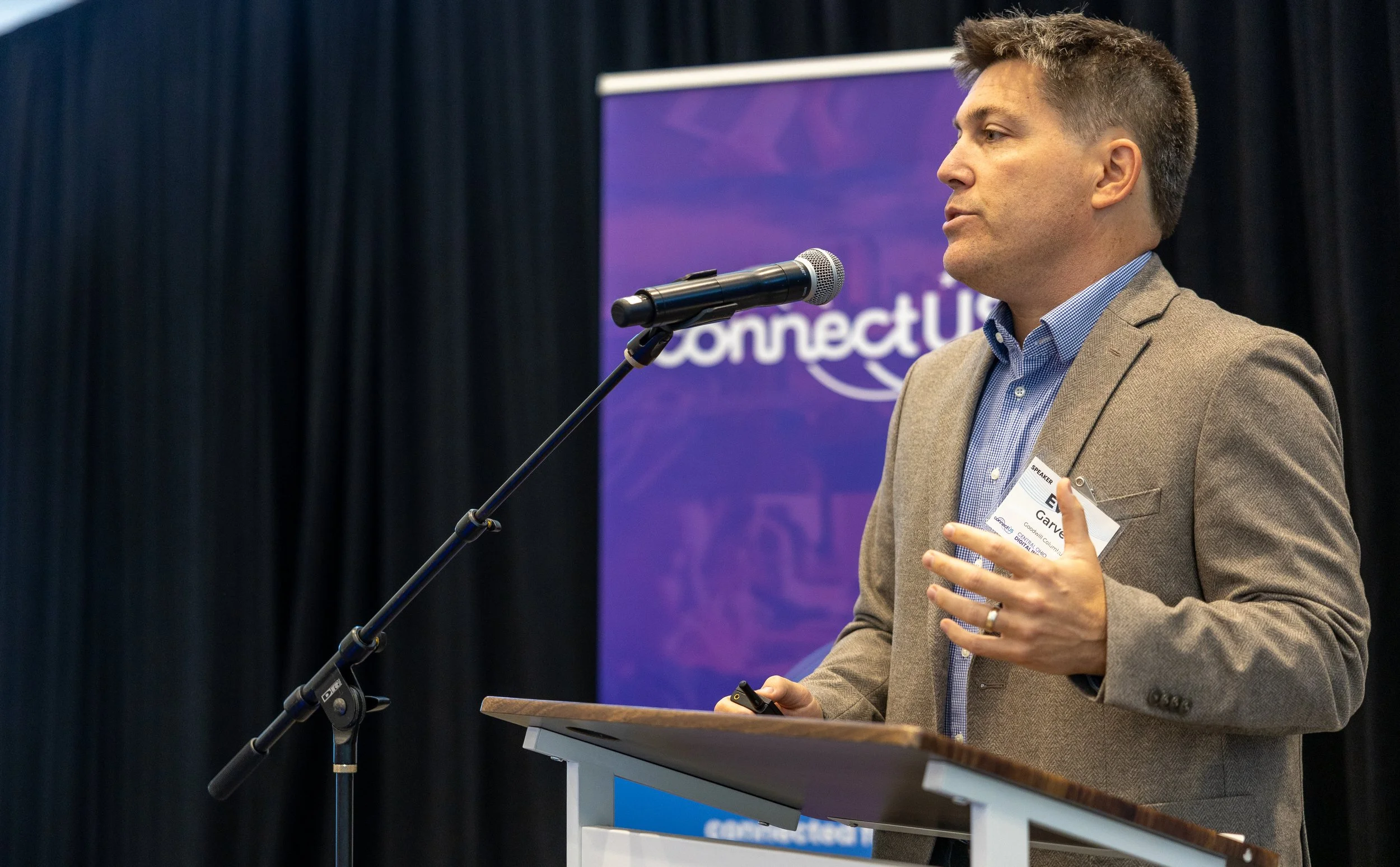Breaking the glass wall of digital inclusion
Last week, partners across Central Ohio came together for the Digital Inclusion Summit, a half-day gathering at the Columbus Metropolitan Library that drew more than 100 attendees from local government, education, healthcare, nonprofits, and private companies.
As part of National Digital Inclusion Week, the event focused on breaking down the jargon of the digital divide, equity and inclusion, and tying efforts directly to outcomes like education, healthcare, and workforce readiness.
Smart Columbus, the City of Columbus, Franklin County, and more than 70 coalition partners co-hosted the event. This cross-sector collaboration marked a milestone for the region: aligning local leaders, educators, and employers around a shared goal of making digital inclusion everyone’s job.
As Council Member Nick Bankston said: “This is about inclusive growth, not just growth.”
This is the question we ask every day at Smart Columbus. What can we do together, collaboratively, across sectors, to ensure innovation and growth serves everyone?
It was inspiring to have so many attendees wrestle with this question together, unpacking how digital equity connects to everyday life. If we don’t reach across industries and sectors, countless residents will lose access to jobs, schooling, healthcare, and more.
Bringing digital inclusion to life
The day opened with remarks from Lauren Hagan, CEO of Columbus Metropolitan Library and Council Member Nick Bankston.
Keynote speaker Duwain Pinder of McKinsey set the tone for the morning, challenging attendees to think about how communities can own their digital futures. He presented data from a large country-wide study on the disparity between Black and white residents. Country-wide, it would take Black residents 300 years to be at parity with where white residents are today. In Central Ohio, that gap increases to 700 years.
His conclusion: we have to focus on neighborhoods and communities not for an election or grant cycle, but for a whole generation.
This framing became the lens through which attendees approached the breakout sessions.
Three breakout tracks explored how connectivity, skills, and tools show up across core parts of everyday life:
Workforce: “From Digital Exclusion to Career Opportunity” with Carey McKay (Human Resource Association of Central Ohio) examined how automation and digital literacy intersect in the modern job search, and what employers can do to make sure technology creates opportunity, not barriers.
Healthcare: “Digital Health as Everyday Access” with Amy Sheon (Public Health Innovators) explored the real-world challenges of telehealth access and patient usability.
Education: “From Pre-K to Workforce Readiness: Learning Continuum in the Digital Age” panel brought together Mario Basora (Future Ready Five), Christopher Lockhart (Columbus City Schools), and John Kellogg (Educational Service Center of Central Ohio), moderated by Dave Cofer (Columbus State), to discuss how schools and employers can better align digital skills at every stage of learning.
The summit’s fireside chat on Device Donation featured Smart Columbus’ Marcus Carano, Columbus Micro’s Zagrous Kawarizadeh, and Patrick Lynch from I Know I Can, sharing how secure corporate tech donation programs are already paying off big in the community. Since launching the pilot, the program has helped place [1,300+] devices into the hands of residents who need them most. Kawarizadeh highlighted how his company takes eWaste and refurbishes it to help keep dangerous and/or reuseable materials out of landfills.
Lynch focused in on how device donations are about freedom and access to the communities served. He pointed out that it’s not just the student or individual getting the device. It’s the whole household.
To close the morning, five quick presentations from community partners showed what digital inclusion looks like on the ground:
Goodwill Columbus (Evan Garver)
Levels Unlocked (Adrian Moore)
NCUS TEC (Tracey Sigers)
Jewish Family Services (Chase Barney)
From assistive tech programs to youth mentorship to digital-skills bootcamps, each story showed the same pattern: when people have the right tools and training, they can create new possibilities for themselves and their communities.
Continuing the momentum
A new public-awareness campaign is now extending that message across the city. Billboards, bench ads, and lawn signs will stay live through the end of the year, highlighting the Digital Skills Hub program and how digital access strengthens education, employment, and quality of life.
Here’s how to stay involved:





